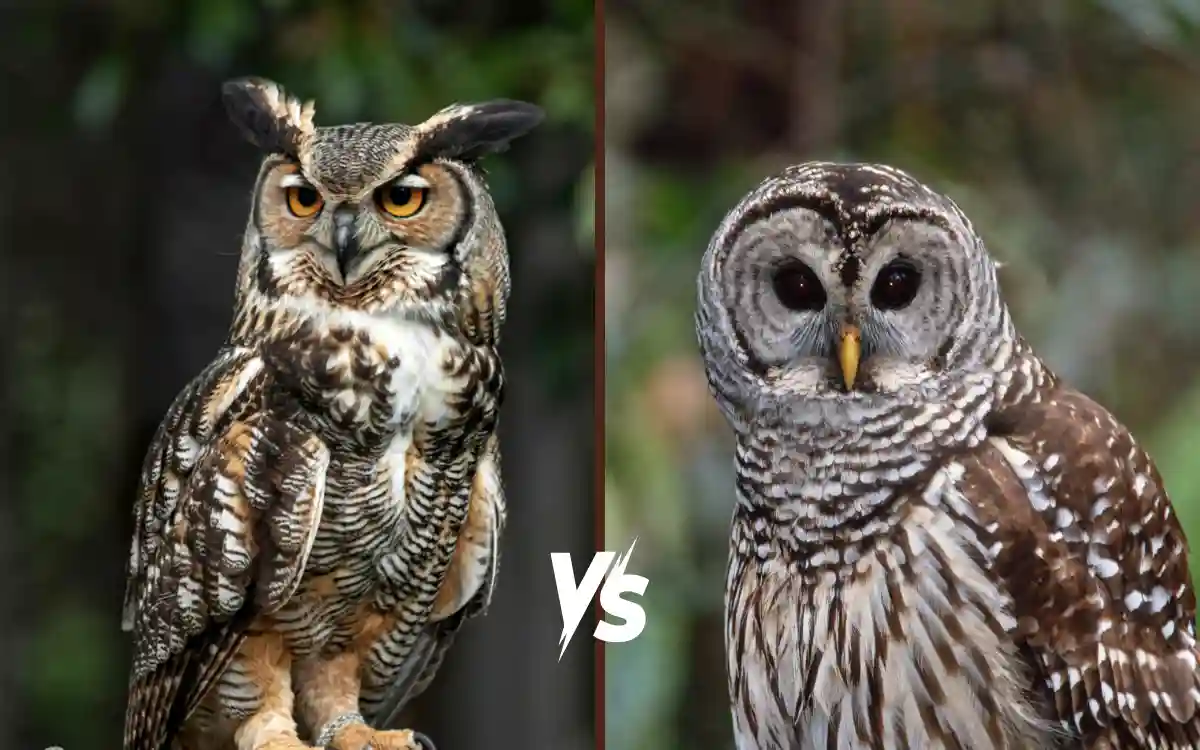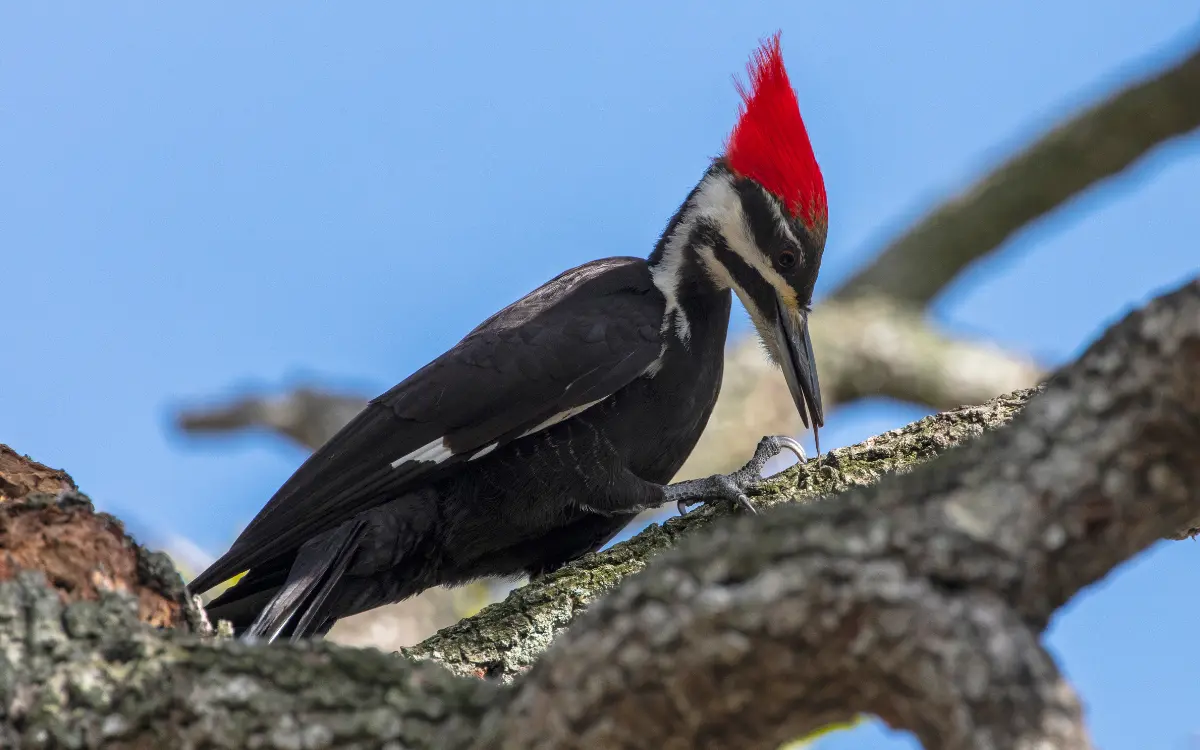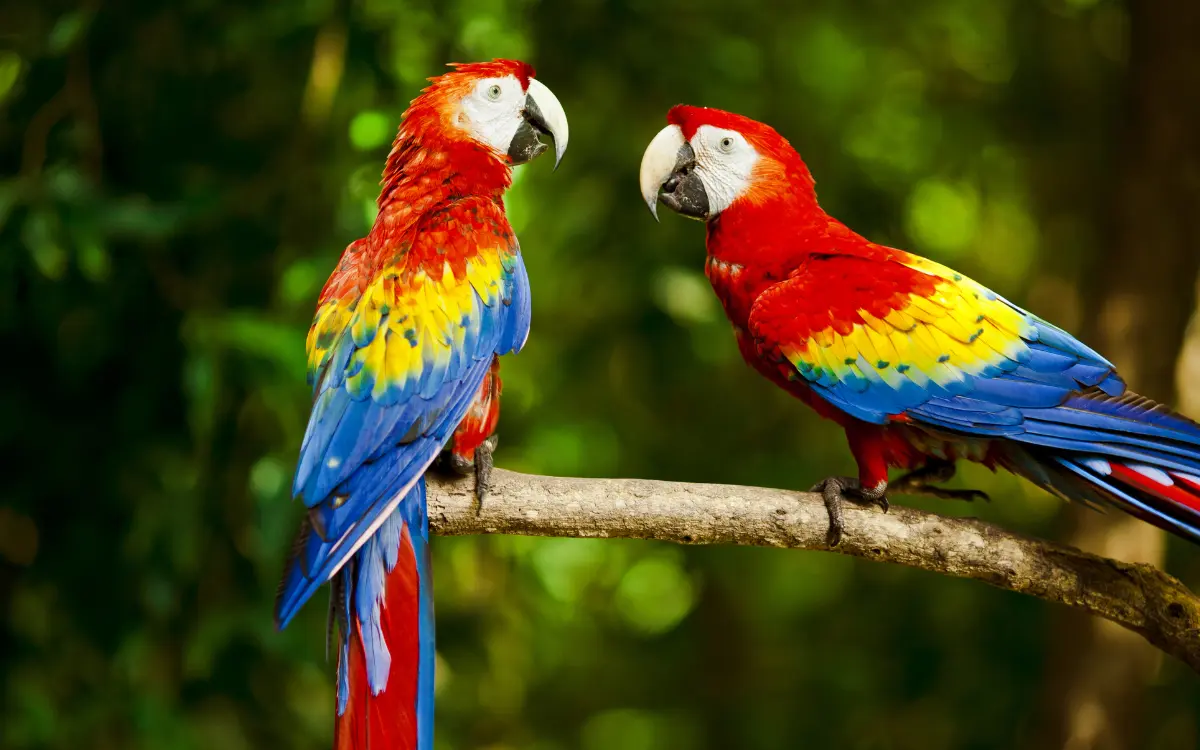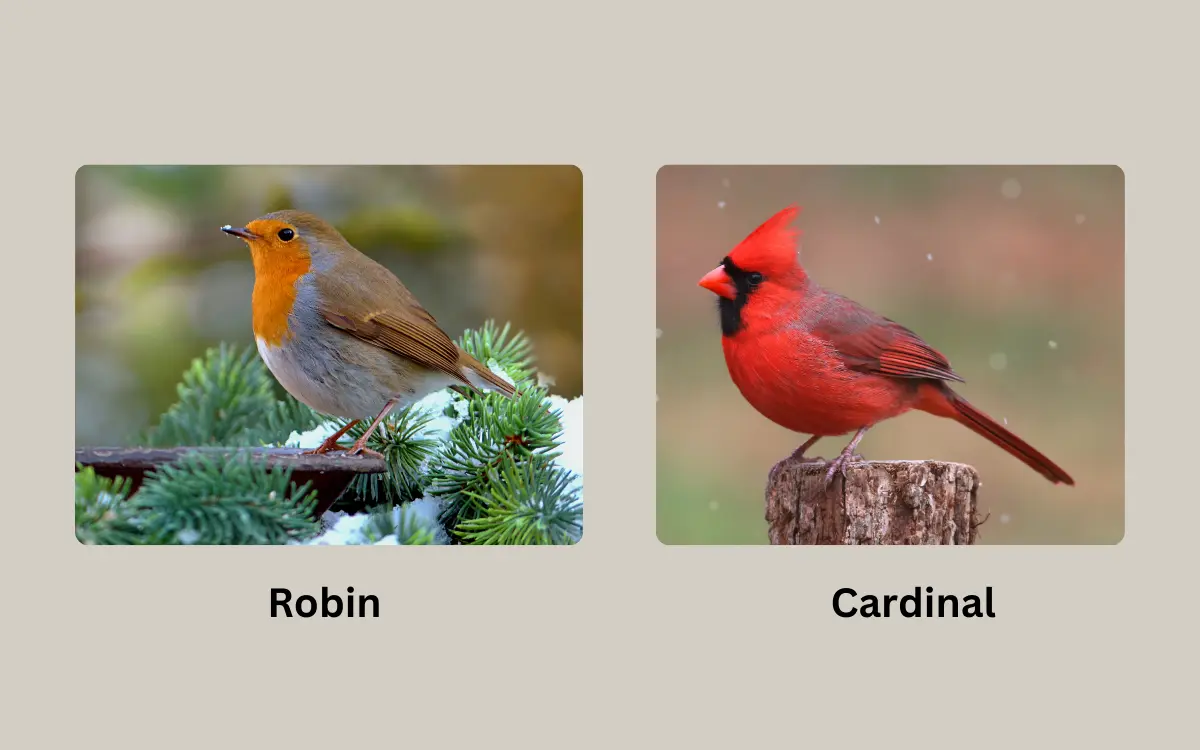15 Bird Similar To Toucan: Exploring Species
Do you know there are similar birds that look like toucan ?
Today in this list we will see their similarity and details that help you to understand more about the theme.
Toucan Species Overview
| Attribute | Detail |
| Kingdom | Animalia |
| Phylum | Chordata |
| Class | Aves |
| Order | Piciformes |
| Genus | Ramphastos |
| Species | Varies by specific toucan species |
| Lifespan | 15-20 years |
| Length | 40-60 cm (16-24 inches) |
| Weight | 300-680 grams (10.6-24 ounces) |
| Wingspan | 60-75 cm (24-30 inches) |
List of 15 Bird that look like toucan
1.Yellow eared Toucanet

The Yellow-eared Toucanet shares several similarities with toucans, including its vibrant plumage, large, colorful bill, and habitat preferences. Like toucans, it is also a fruit-eating bird and is known for its social behavior and vocalizations.
Taxonomy
- Order: Piciformes
- Genus: Selenidera
- Species: S. spectabilis
Physical Characteristics
- Length: 33-38 cm (13-15 inches)
- Weight: 180-275 grams (6.3-9.7 ounces)
- Wingspan: Approximately 43-50 cm (17-20 inches)
Habitat and Range
- Location to See: The Yellow-eared Toucanet is typically found in the lowland rainforests of Central and South America, particularly in countries such as Costa Rica, Panama, Colombia, Ecuador, and northern Brazil.
2.Collared Aracari
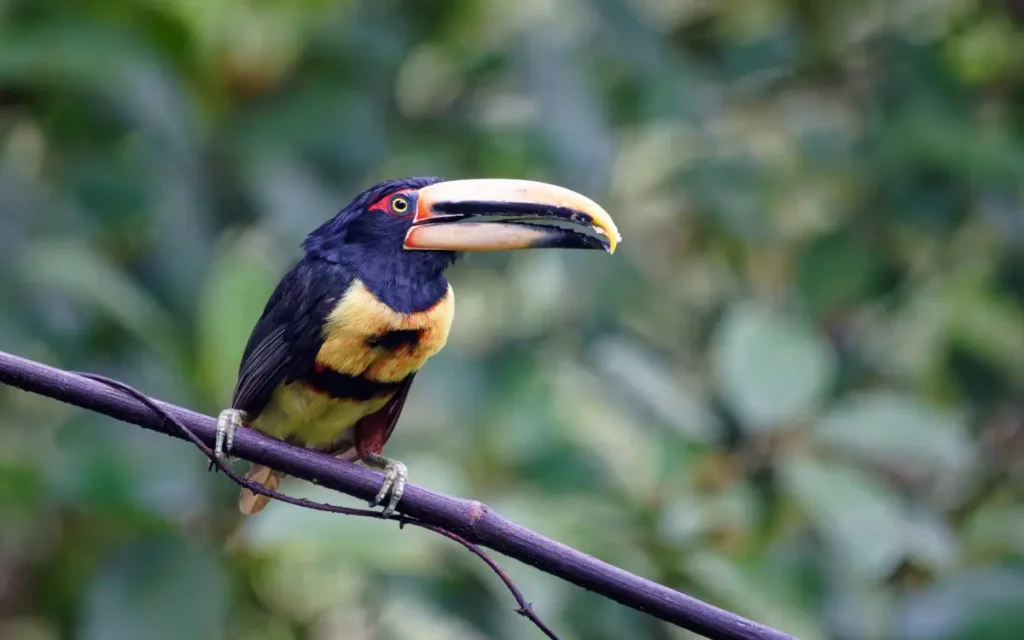
The Collared Aracari exhibits several toucan-like features, including a large, colorful bill, vibrant plumage, and a fruit-based diet. It is also known for its social behavior, often seen in small flocks, and its distinctive vocalizations.
Taxonomy
- Order: Piciformes
- Genus: Pteroglossus
- Species: P. torquatus
Physical Characteristics
- Length: 38-43 cm (15-17 inches)
- Weight: 177-309 grams (6.2-10.9 ounces)
- Wingspan: Approximately 44-48 cm (17-19 inches)
Habitat and Range
- Location to See: The Collared Aracari is commonly found in the tropical rainforests and woodlands of Central and South America, especially in countries like Mexico, Guatemala, Honduras, Nicaragua, Costa Rica, and Panama.
3.Black-necked Aracari
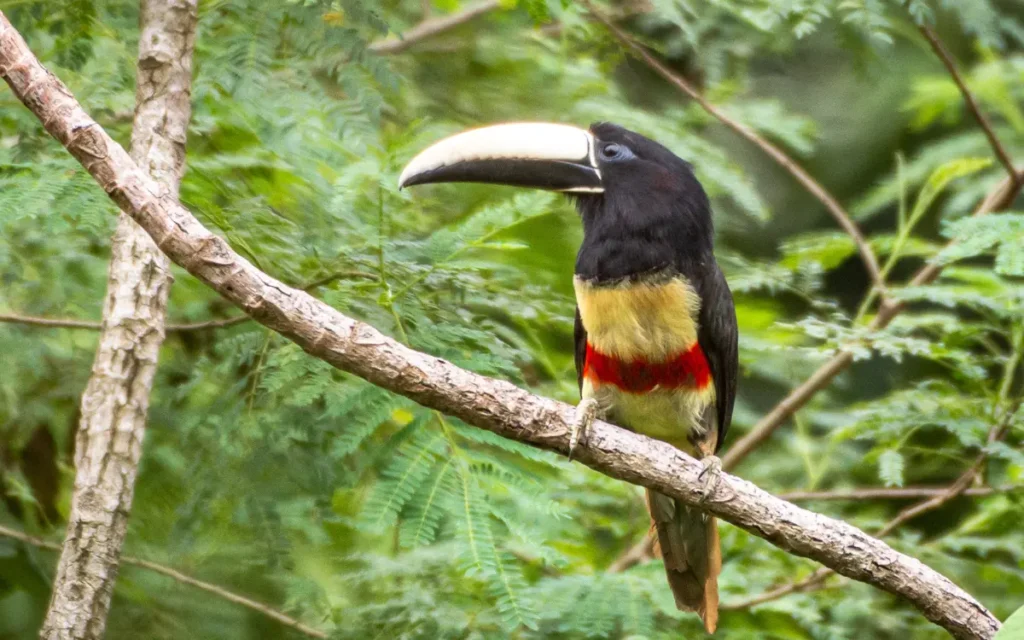
The Black-necked Aracari shares numerous similarities with toucans, such as its large, colorful bill, bright plumage, and fruit-dominated diet. It is also social, often seen in groups, and possesses distinctive vocal calls.
Taxonomy
- Order: Piciformes
- Genus: Pteroglossus
- Species: P. aracari
Physical Characteristics
- Length: 35-45 cm (14-18 inches)
- Weight: 177-235 grams (6.2-8.3 ounces)
- Wingspan: Approximately 50-60 cm (20-24 inches)
Habitat and Range
- Location to See: The Black-necked Aracari is typically found in the tropical rainforests and forest edges of South America, especially in regions of Brazil, Venezuela, Colombia, and the Guianas.
4.Great Hornbill

The Great Hornbill shares several similarities with toucans, such as its impressive, large bill, vibrant plumage, and preference for fruit. It is also known for its social behavior and unique calls that resonate through its habitat.
Taxonomy
- Order: Bucerotiformes
- Genus: Buceros
- Species: B. bicornis
Physical Characteristics
- Length: 95-120 cm (37-47 inches)
- Weight: 2.15-4 kg (4.7-8.8 pounds)
- Wingspan: Approximately 150 cm (59 inches)
Habitat and Range
- Location to See: The Great Hornbill is found in the dense forests of the Indian subcontinent and Southeast Asia, particularly in countries like India, Nepal, Bhutan, Bangladesh, Myanmar, Thailand, Laos, Cambodia, Vietnam, Malaysia, and Indonesia.
5.Rhinoceros Hornbill
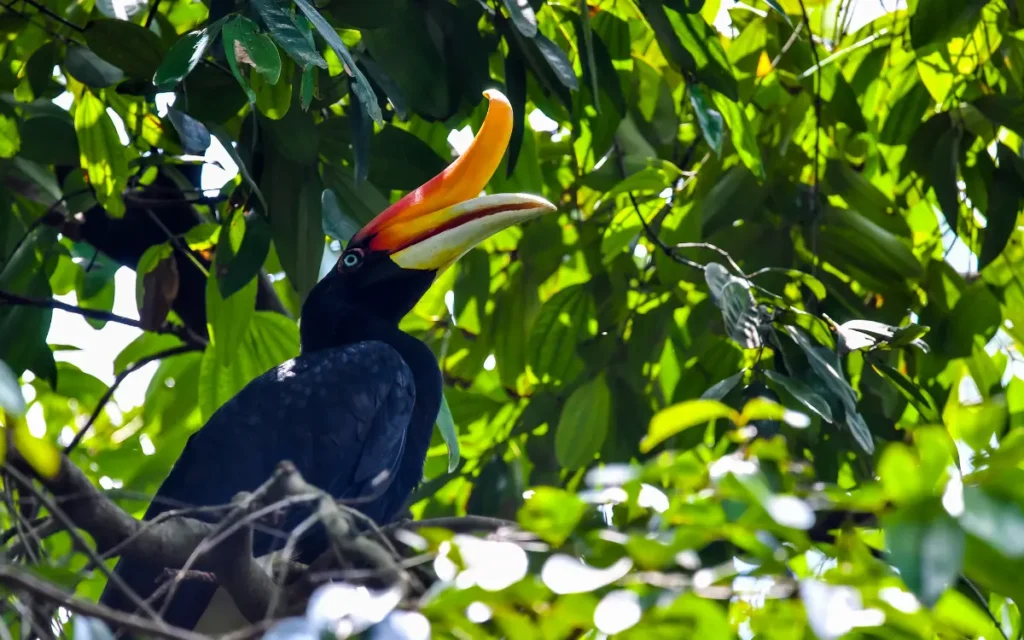
The Rhinoceros Hornbill shares several traits with toucans, including a prominent, colorful bill and striking plumage. Both species are frugivorous and display social behaviors, often observed in pairs or small groups, with distinctive calls echoing through their habitats.
Taxonomy
- Order: Bucerotiformes
- Genus: Buceros
- Species: B. rhinoceros
Physical Characteristics
- Length: 91-122 cm (36-48 inches)
- Weight: 2-3 kg (4.4-6.6 pounds)
- Wingspan: Approximately 152 cm (60 inches)
Habitat and Range
- Location to See: The Rhinoceros Hornbill inhabits the tropical and subtropical rainforests of Southeast Asia, particularly in Malaysia, Sumatra, Java, and Borneo.
6.Shoebill
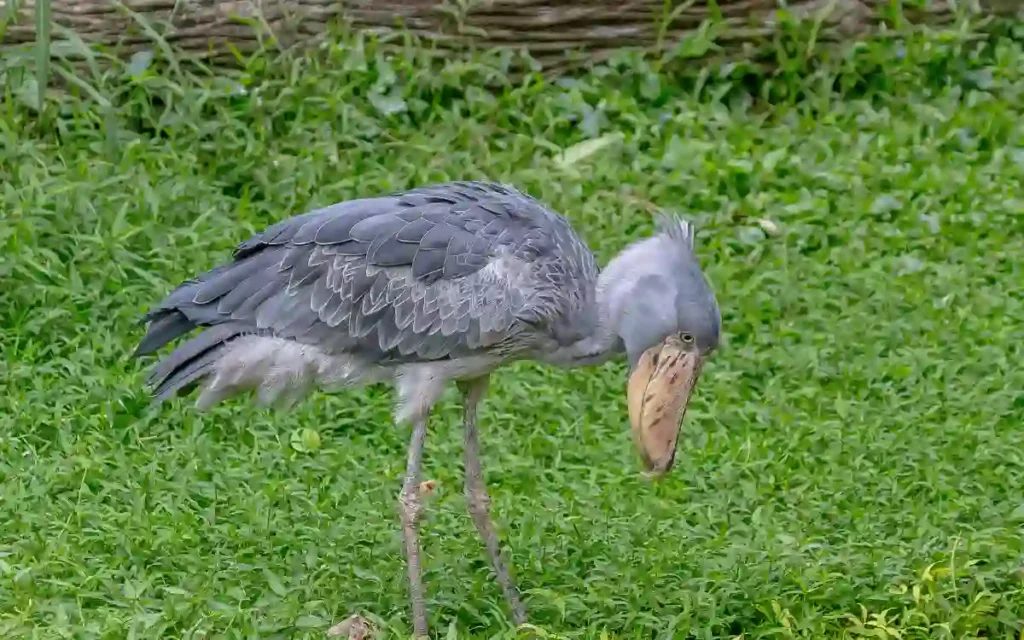
While the Shoebill differs significantly from toucans in many aspects, it shares the distinctive feature of a large, impressive bill. Both birds are known for their unique and striking appearance, drawing attention in their respective habitats.
Taxonomy
- Order: Pelecaniformes
- Genus: Balaeniceps
- Species: B. rex
Physical Characteristics
- Length: 110-140 cm (43-55 inches)
- Weight: 4-7 kg (8.8-15.4 pounds)
- Wingspan: 230-260 cm (91-102 inches)
Habitat and Range
- Location to See: The Shoebill is primarily found in the freshwater swamps and wetlands of central tropical Africa, particularly in countries like South Sudan, Uganda, the Democratic Republic of the Congo, and Zambia.
7.Chestnut-mandibled Toucan
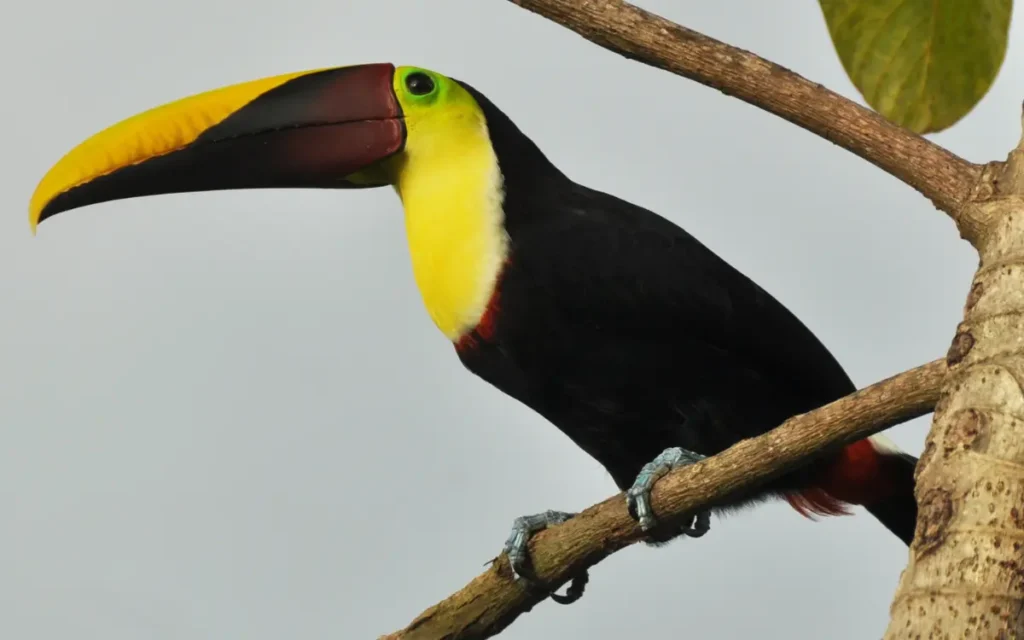
The Chestnut-mandibled Toucan, like other toucans, features a large, colorful bill, vibrant plumage, and a fruit-based diet. Known for its social nature, it is often seen in small flocks and is recognized for its loud, distinctive calls.
Taxonomy
- Order: Piciformes
- Genus: Ramphastos
- Species: R. ambiguus swainsonii
Physical Characteristics
- Length: 50-56 cm (20-22 inches)
- Weight: 600-750 grams (1.3-1.6 pounds)
- Wingspan: Approximately 65-75 cm (26-30 inches)
Habitat and Range
- Location to See: The Chestnut-mandibled Toucan is typically found in the humid lowland forests of Central and South America, particularly in countries like Costa Rica, Panama, Colombia, and Ecuador.
8.Keel-billed Toucan

The Keel-billed Toucan, like other toucans, is known for its large, colorful bill, striking plumage, and preference for a fruit-based diet. It exhibits social behavior, often seen in flocks, and has distinctive vocalizations that are typical of toucans.
Taxonomy
- Order: Piciformes
- Genus: Ramphastos
- Species: R. sulfuratus
Physical Characteristics
- Length: 42-55 cm (16.5-21.5 inches)
- Weight: 380-500 grams (13.4-17.6 ounces)
- Wingspan: Approximately 109 cm (43 inches)
Habitat and Range
- Location to See: The Keel-billed Toucan is found in the tropical and subtropical forests of Central and South America, especially in countries like Mexico, Belize, Guatemala, Honduras, Nicaragua, Costa Rica, Panama, and northern Colombia.
9.Crimson-rumped Toucanet
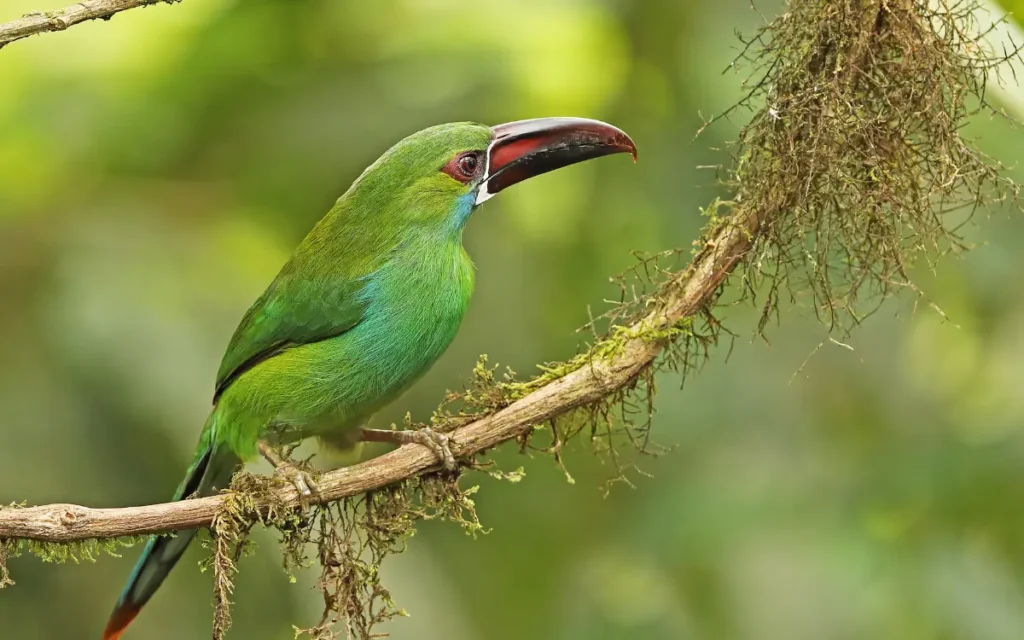
The Crimson-rumped Toucanet shares several features with toucans, including a prominent bill, vibrant green plumage with a striking red rump, and a fruit-based diet. Like toucans, it is known for its social behavior and distinctive calls.
Taxonomy
- Order: Piciformes
- Genus: Aulacorhynchus
- Species: A. haematopygus
Physical Characteristics
- Length: 35-40 cm (14-16 inches)
- Weight: 150-200 grams (5.3-7.1 ounces)
- Wingspan: Approximately 50 cm (20 inches)
Habitat and Range
- Location to See: The Crimson-rumped Toucanet is typically found in the humid forests of the Andean slopes, particularly in countries like Colombia, Ecuador, and Venezuela.
10.Groove-billed Toucanet
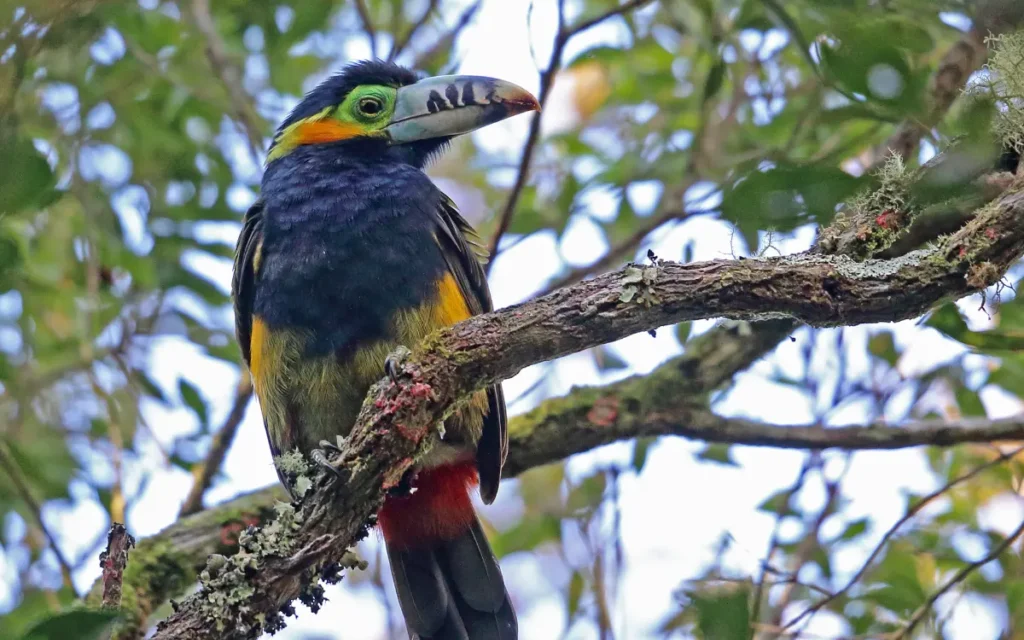
The Groove-billed Toucanet shares many characteristics with toucans, such as a large, colorful bill, vibrant plumage, and a diet primarily consisting of fruit. It exhibits similar social behavior and vocalizations, making it a quintessential member of the toucan family.
Taxonomy
- Order: Piciformes
- Genus: Aulacorhynchus
- Species: A. sulcatus
Physical Characteristics
- Length: 30-35 cm (12-14 inches)
- Weight: 110-165 grams (3.9-5.8 ounces)
- Wingspan: Approximately 43-48 cm (17-19 inches)
Habitat and Range
- Location to See: The Groove-billed Toucanet is found in the montane forests and foothills of northern South America, particularly in countries like Venezuela, Colombia, and Ecuador.
11.Northern Emerald Toucanet
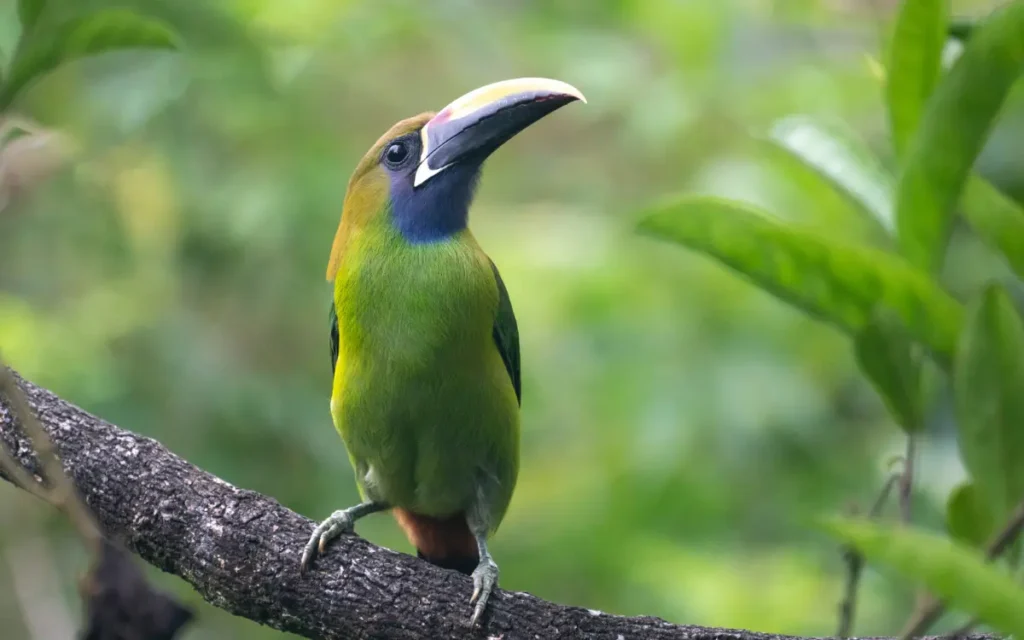
The Northern Emerald Toucanet shares many features with toucans, including a colorful, prominent bill, vibrant green plumage, and a diet that heavily relies on fruits. It is social and vocal, often seen in pairs or small groups, similar to other toucans.
Taxonomy
- Order: Piciformes
- Genus: Aulacorhynchus
- Species: A. prasinus
Physical Characteristics
- Length: 30-35 cm (12-14 inches)
- Weight: 140-200 grams (4.9-7.1 ounces)
- Wingspan: Approximately 43-48 cm (17-19 inches)
Habitat and Range
- Location to See: The Northern Emerald Toucanet is typically found in the montane forests and highlands of Central America, especially in countries like Mexico, Guatemala, Honduras, Costa Rica, and Panama.
12.Mountain Toucans
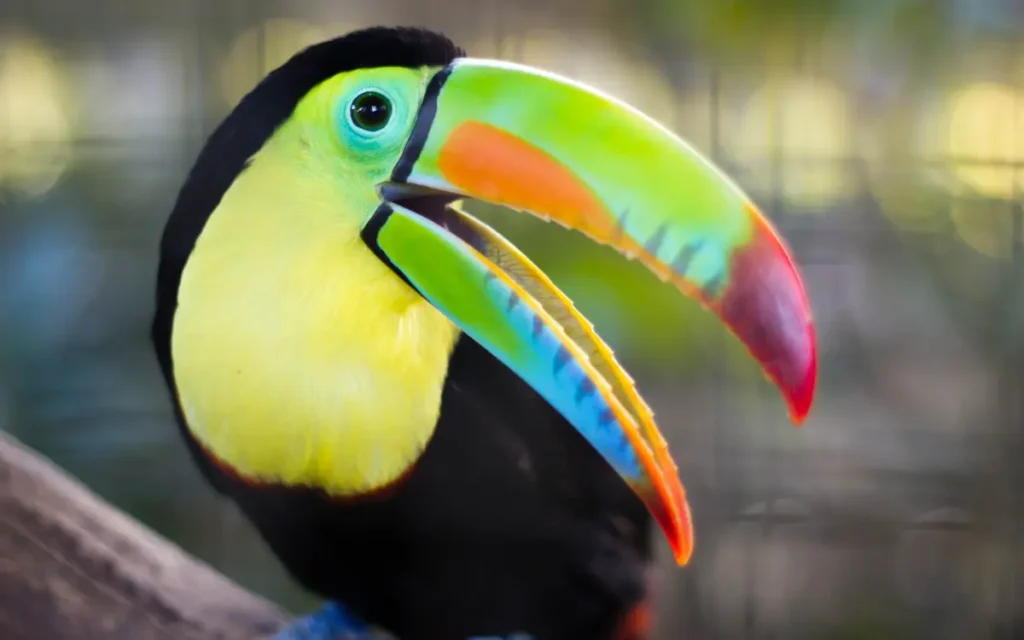
Mountain Toucans share several key characteristics with toucans, including large, colorful bills, vibrant plumage, and a primarily frugivorous diet. They exhibit social behavior, often seen in pairs or small groups, and are known for their distinctive calls.
Taxonomy
- Order: Piciformes
- Genus: Andigena
- Species: Varies by specific Mountain Toucan species (e.g., Andigena hypoglauca for the Gray-breasted Mountain Toucan)
Physical Characteristics
- Length: 42-54 cm (16.5-21 inches)
- Weight: 230-330 grams (8.1-11.6 ounces)
- Wingspan: Approximately 55-60 cm (22-24 inches)
Habitat and Range
- Location to See: Mountain Toucans are typically found in the cloud forests and montane forests of the Andes in South America, particularly in countries like Colombia, Ecuador, Peru, and Bolivia. Specific ranges depend on the particular species of Mountain Toucan.
13.Plate-billed Mountain Toucan

The Plate-billed Mountain Toucan shares several traits with other toucans, such as a large, colorful bill, vibrant plumage, and a fruit-based diet. It is known for its social behavior and distinctive vocalizations, often seen in pairs or small groups.
Taxonomy
- Order: Piciformes
- Genus: Andigena
- Species: A. laminirostris
Physical Characteristics
- Length: 42-52 cm (16.5-20.5 inches)
- Weight: 250-300 grams (8.8-10.6 ounces)
- Wingspan: Approximately 55-60 cm (22-24 inches)
Habitat and Range
- Location to See: The Plate-billed Mountain Toucan is found in the cloud forests of the Andean slopes, primarily in Ecuador and southern Colombia. It inhabits elevations typically ranging from 1,500 to 3,200 meters (4,900 to 10,500 feet).
14.Hooded Mountain Toucan
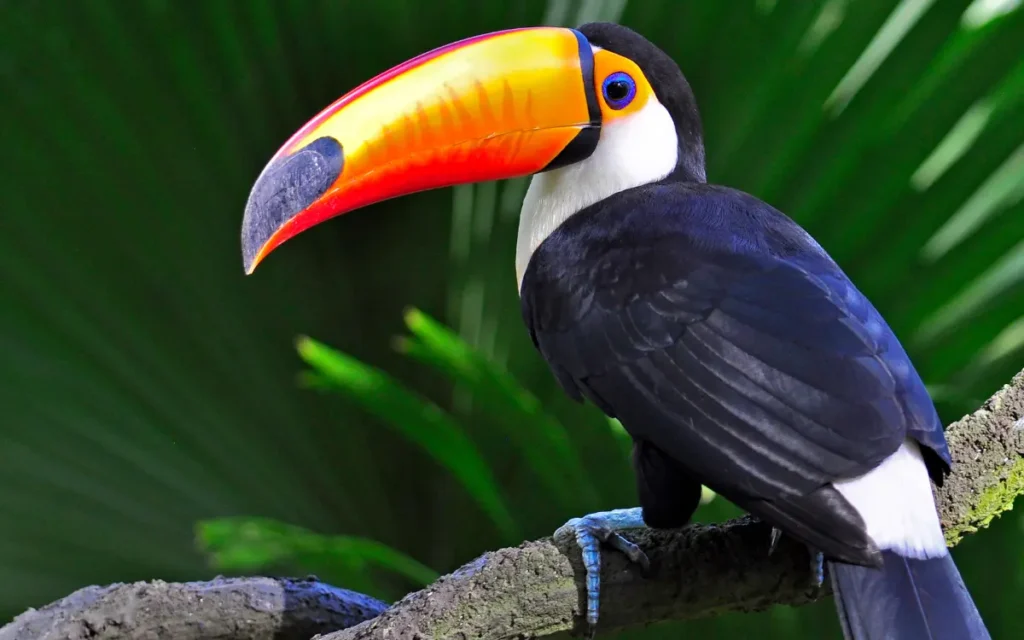
The Hooded Mountain Toucan shares many characteristics with other toucans, including a large, colorful bill, vibrant plumage, and a fruit-based diet. It exhibits social behavior, often observed in pairs or small groups, and has distinctive calls that are typical of toucans.
Taxonomy
- Order: Piciformes
- Genus: Andigena
- Species: A. cucullata
Physical Characteristics
- Length: 45-48 cm (18-19 inches)
- Weight: 250-300 grams (8.8-10.6 ounces)
- Wingspan: Approximately 55-60 cm (22-24 inches)
Habitat and Range
- Location to See: The Hooded Mountain Toucan is found in the cloud forests of the Andes, particularly in Bolivia and southern Peru. It inhabits elevations typically ranging from 1,500 to 3,000 meters (4,900 to 9,800 feet).
15.Black-billed Mountain-Toucan
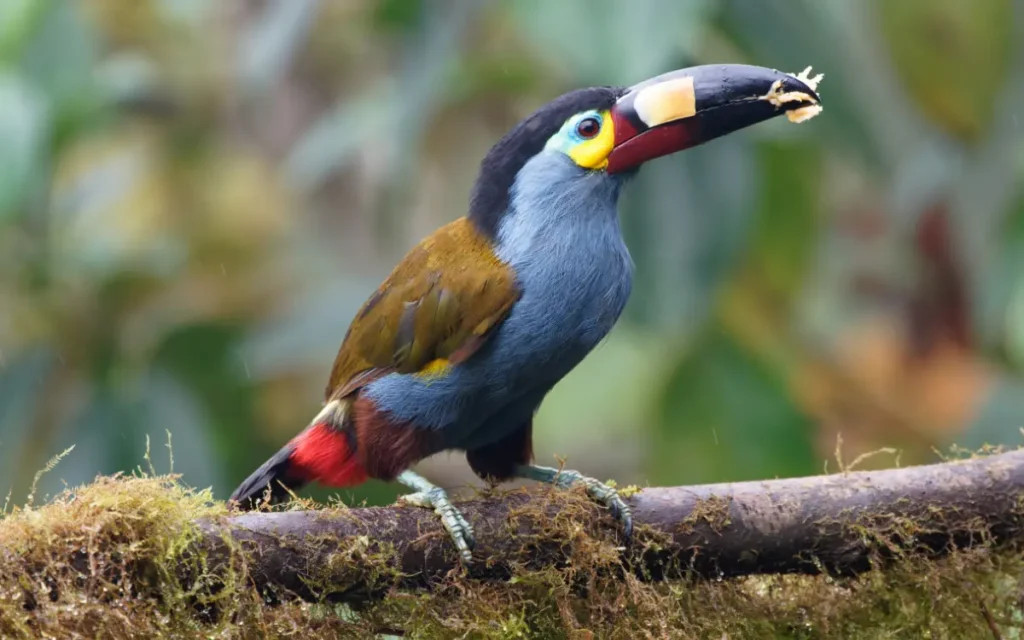
The Black-billed Mountain Toucan, like other toucans, features a large bill, although it is less colorful, and has vibrant plumage. It primarily feeds on fruit and exhibits social behavior, often seen in pairs or small groups, with distinctive calls similar to other toucan species.
Taxonomy
- Order: Piciformes
- Genus: Andigena
- Species: A. nigrirostris
Physical Characteristics
- Length: 45-50 cm (18-20 inches)
- Weight: 250-325 grams (8.8-11.5 ounces)
- Wingspan: Approximately 55-60 cm (22-24 inches)
Habitat and Range
- Location to See: The Black-billed Mountain Toucan is typically found in the cloud forests and montane forests of the Andes in South America, particularly in Colombia, Ecuador, and northern Peru. It inhabits elevations ranging from 1,500 to 3,200 meters (4,900 to 10,500 feet).
FAQs
What is the famous toucan bird?
The most famous toucan bird is the Keel-billed Toucan (Ramphastos sulfuratus), also known as the Rainbow-billed Toucan. Its colorful bill and vibrant plumage make it one of the most recognizable and iconic members of the toucan family.
What are small toucans called?
Small toucans are often referred to as toucanets or aracaris. These smaller species, such as the Emerald Toucanet and Collared Aracari, share many characteristics with their larger relatives but are more diminutive in size.
Is a toucan a pet?
While toucans can be kept as pets, they require specialized care and a significant commitment. They have specific dietary needs, requiring a diet rich in fruits, and they need a spacious environment to thrive. Additionally, toucans can be noisy and are not typically considered suitable for all households.
Is a toucan bird smart?
Yes, toucans are considered intelligent birds. They exhibit problem-solving skills, can learn tricks, and have complex social interactions. Their intelligence, combined with their playful nature, makes them fascinating animals both in the wild and in captivity.
Can toucans talk?
Toucans do not have the ability to mimic human speech like some parrots. However, they are vocal birds and communicate through a variety of calls and sounds. Their vocalizations are often loud and distinctive, used for communication within their social groups.
Are toucans a woodpecker?
Toucans are not woodpeckers, but they are related. Both belong to the order Piciformes, which includes woodpeckers, toucans, barbets, and honeyguides. Despite this relation, toucans and woodpeckers have different behaviors, habitats, and physical characteristics.
What is the toucan’s closest relative?
The toucan’s closest relatives are other birds within the toucan family, such as the Aracari and Toucanet. They share similar habitats, diets, and appearances with the common toucan.
Is a toucan a hornbill?
No, a toucan is not a hornbill. While they both have large bills, they are different species and live in different parts of the world. Toucans are native to the Americas, while hornbills are found in Africa and Asia.
Are there different types of toucans?
Yes, there are several different types of toucans, such as the Keel-billed Toucan, Chestnut-mandible Toucan, and Toco Toucan. Each type has unique colors and features but shares the iconic large, colorful bill.


